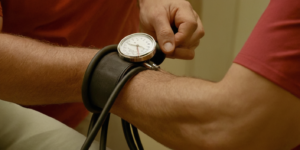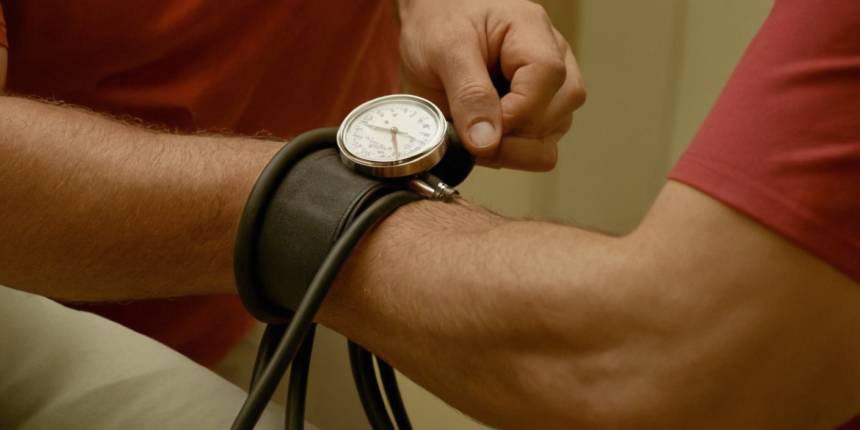
High blood pressure, also known as hypertension, is a prevalent health condition affecting millions of men worldwide. Left untreated, hypertension can lead to serious complications such as heart disease, stroke, and kidney damage. Fortunately, there are numerous effective strategies for managing and treating high blood pressure in men. From lifestyle modifications and dietary changes to medication and stress management techniques, adopting a comprehensive approach is key to achieving optimal blood pressure control. In this in-depth guide, we’ll explore actionable insights, tips, and lifestyle changes for effectively treating high blood pressure in men.
Understanding High Blood Pressure in Men
Before delving into treatment strategies, it’s essential to understand what high blood pressure is and how it affects men’s health. Blood pressure is the force exerted by the blood against the walls of the arteries as it circulates through the body. When this pressure remains consistently high, it can strain the heart and blood vessels, increasing the risk of cardiovascular complications. Hypertension is often referred to as the “silent killer” because it typically presents with few or no symptoms until it reaches a critical stage.
Lifestyle Modifications for Blood Pressure Control
- Healthy Diet: Adopting a heart-healthy diet rich in fruits, vegetables, whole grains, lean proteins, and low-fat dairy products can help lower blood pressure. Emphasize foods high in potassium, magnesium, and fiber while limiting sodium, saturated fats, and processed foods. The Dietary Approaches to Stop Hypertension (DASH) diet is particularly beneficial for managing hypertension.
- Regular Exercise: Engaging in regular physical activity is essential for maintaining a healthy weight, improving cardiovascular health, and lowering blood pressure. Aim for at least 150 minutes of moderate-intensity aerobic exercise or 75 minutes of vigorous-intensity exercise per week, along with muscle-strengthening activities on two or more days per week.
- Weight Management: Losing excess weight can significantly reduce blood pressure levels in men with hypertension. Even modest weight loss can lead to meaningful improvements in blood pressure control. Focus on achieving a healthy body mass index (BMI) through a combination of diet, exercise, and lifestyle modifications.
- Limit Alcohol Consumption: Excessive alcohol consumption can raise blood pressure and interfere with hypertension treatment. Men should limit alcohol intake to no more than two drinks per day, with one drink equivalent to 12 ounces of beer, 5 ounces of wine, or 1.5 ounces of distilled spirits.
Dietary Approaches for Blood Pressure Reduction
- Reduce Sodium Intake: Excess dietary sodium is a leading contributor to high blood pressure. Limiting sodium intake by avoiding processed foods, restaurant meals, and adding salt to meals can help lower blood pressure. Aim for less than 2,300 milligrams of sodium per day, or even lower if possible.
- Increase Potassium-Rich Foods: Potassium helps counteract the effects of sodium and regulate blood pressure. Incorporate potassium-rich foods such as bananas, spinach, sweet potatoes, avocado, and oranges into your diet to support healthy blood pressure levels.
- Magnesium Supplementation: Magnesium plays a crucial role in blood pressure regulation and muscle function. While it’s best to obtain magnesium from dietary sources such as nuts, seeds, whole grains, and leafy greens, some men may benefit from magnesium supplementation under the guidance of a healthcare professional.
Stress Management and Relaxation Techniques
- Mindfulness Meditation: Practicing mindfulness meditation can help reduce stress, lower blood pressure, and improve overall well-being. Set aside time each day for meditation, deep breathing exercises, or progressive muscle relaxation to promote relaxation and stress relief.
- Yoga and Tai Chi: Yoga and tai chi are ancient practices that combine gentle movements with deep breathing and meditation. These mind-body exercises can help reduce blood pressure, improve flexibility and balance, and enhance mental clarity and focus.
- Biofeedback Therapy: Biofeedback therapy involves using electronic monitoring devices to provide real-time feedback on physiological processes such as heart rate, blood pressure, and muscle tension. By learning to control these bodily functions, men can effectively reduce stress and lower blood pressure levels.
Medication and Medical Interventions
- Antihypertensive Medications: In some cases, lifestyle modifications alone may not be sufficient to lower blood pressure to target levels. Your healthcare provider may prescribe medications such as diuretics, ACE inhibitors, angiotensin II receptor blockers (ARBs), beta-blockers, or calcium channel blockers to help manage hypertension.
- Complementary Therapies: Complementary and alternative therapies such as acupuncture, biofeedback, and herbal supplements may offer additional benefits for blood pressure control. However, it’s essential to consult with a qualified healthcare professional before incorporating these treatments into your hypertension management plan.
Conclusion
Treating high blood pressure in men requires a comprehensive approach that addresses underlying lifestyle factors, dietary habits, stress management techniques, and medical interventions. By adopting healthy lifestyle modifications, making dietary changes, practicing stress reduction techniques, and following medical advice, men can effectively manage hypertension and reduce the risk of cardiovascular complications. Remember to work closely with your healthcare provider to develop a personalized treatment plan tailored to your individual needs and preferences. With dedication and commitment to maintaining optimal blood pressure levels, men can achieve better health and well-being for years to come.
